In the last quarter century there has been a remarkable recovery by populations of North American birds of prey once ravaged by DDT. Some species, such as Osprey and Merlin, largely recovered on their own. The Bald Eagle was given a boost in some states by human hacking/reintroduction efforts. The Peregrine Falcon benefited the most, in certain regions, from the efforts of human hands. While these efforts in Northeastern North America, including The Thousand Islands, have been publicly lauded, they are not without controversy. The Peregrine’s story provides a cautionary tale for wildlife managers of the future.
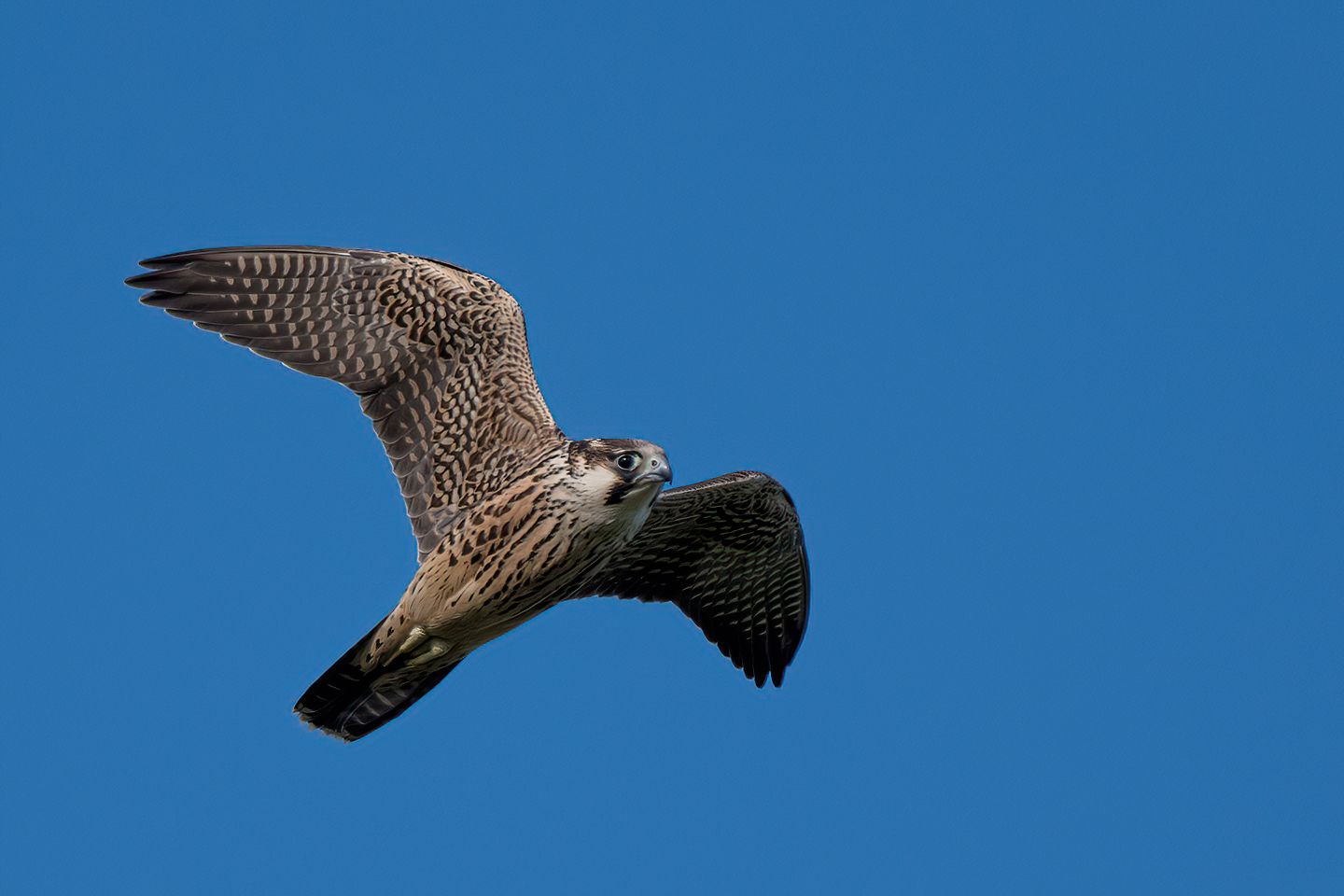
Before DDT, there were two distinct subspecies of Peregrines in North America. The first was the Arctic Peregrine, f.p. rundrius, a long distance migrant. Nesting at high latitudes, it follows shorebirds and waterfowl annually as far south as the southern tip of South America. The population crash of these birds received much attention and research during their decline and recovery. Fortunately, they nested in regions far from heavy pesticide contamination, so once DDT threshold levels to the south dropped substantially, their populations rebounded rapidly.
Observations of migrants at coastal hawk watches clearly indicate this group is thriving without any direct human help.
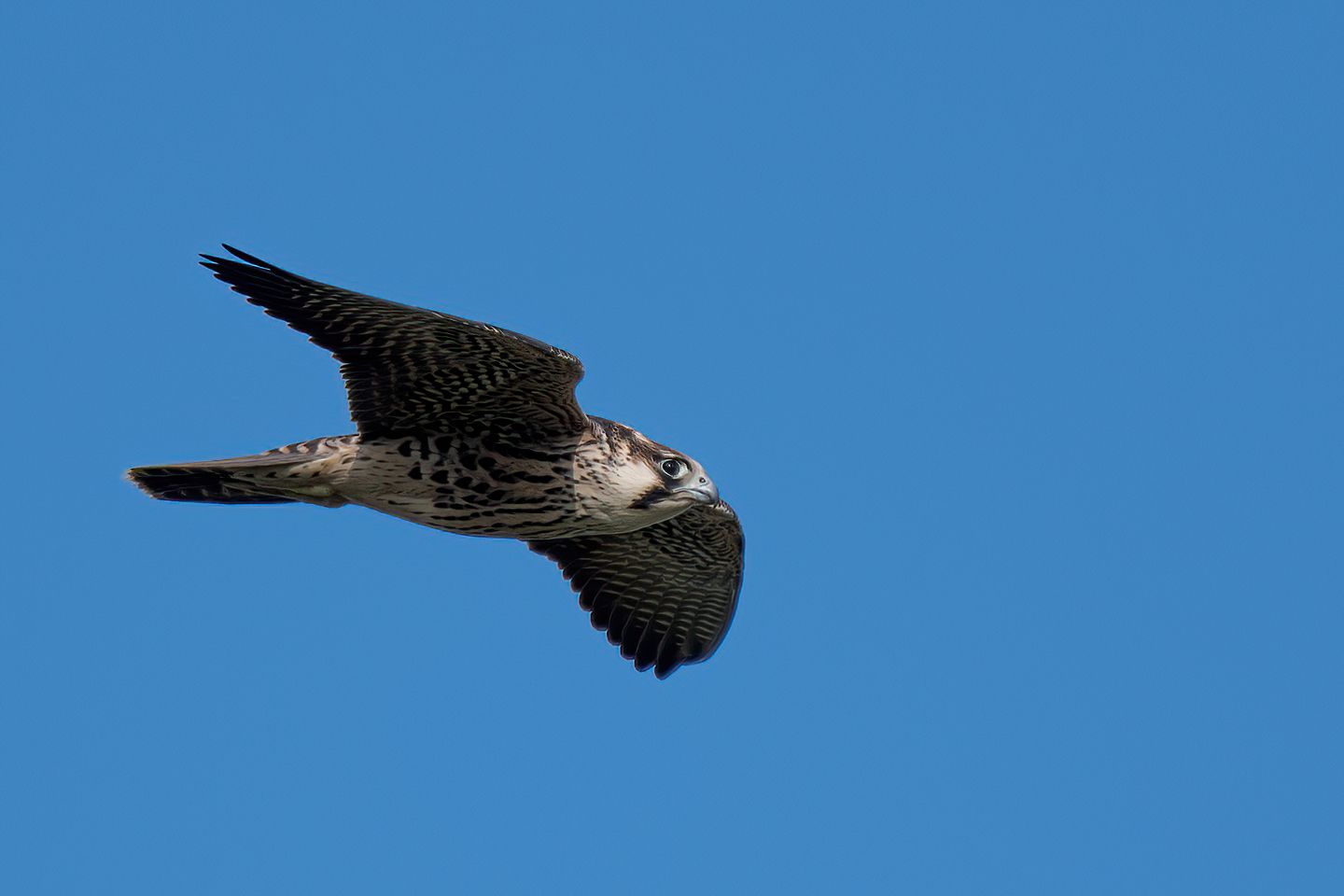
The second subspecies in North America was f. p. anatum. The habits of these birds were very different from those of their far wandering cousins. Primarily residents, or short to medium distance migrants, these birds largely nested in the mountains of both Eastern and Western North America. It is this ecological niche once occupied by this subspecies that has been filled and expanded by reintroduced birds. These birds and their decedents owe their very existence to human hands playing god. There is indeed a Peregrine now occupying eastern mountains, bridges, urban skyscrapers, and other human dominated landscapes that would not exist but for our intervention.
By the time observers realized what was happening in the 1950s, the eastern population of the Mountain Peregrine was nearly gone. These iconic birds were essentially biologically extinct by 1966, when a major scientific conference on the problem was convened in Madison, Wisconsin. Attended by most ornithological luminaries of the time, the drastic decline of these mountain Peregrines was scientifically well-documented. The eastern birds were proven to be in terrible shape and western birds were only a bit better off. After documenting the problem thoroughly, the question of what to do was the order of the day.
Among the academics at this conference and other raptor-philes present were a number of falconers. Peregrines had always been a favored hunting hawk for the aristocracy in the “sport of kings” and now other people kept them in modern times. These falconers were used to breeding and manipulating birds in captivity, so the ideas of captive breeding and other large scale human interventions came naturally. One has to remember in those dark days of the 1960s that many of our most magnificent birds of prey were in severe decline and the future looked bleak indeed.
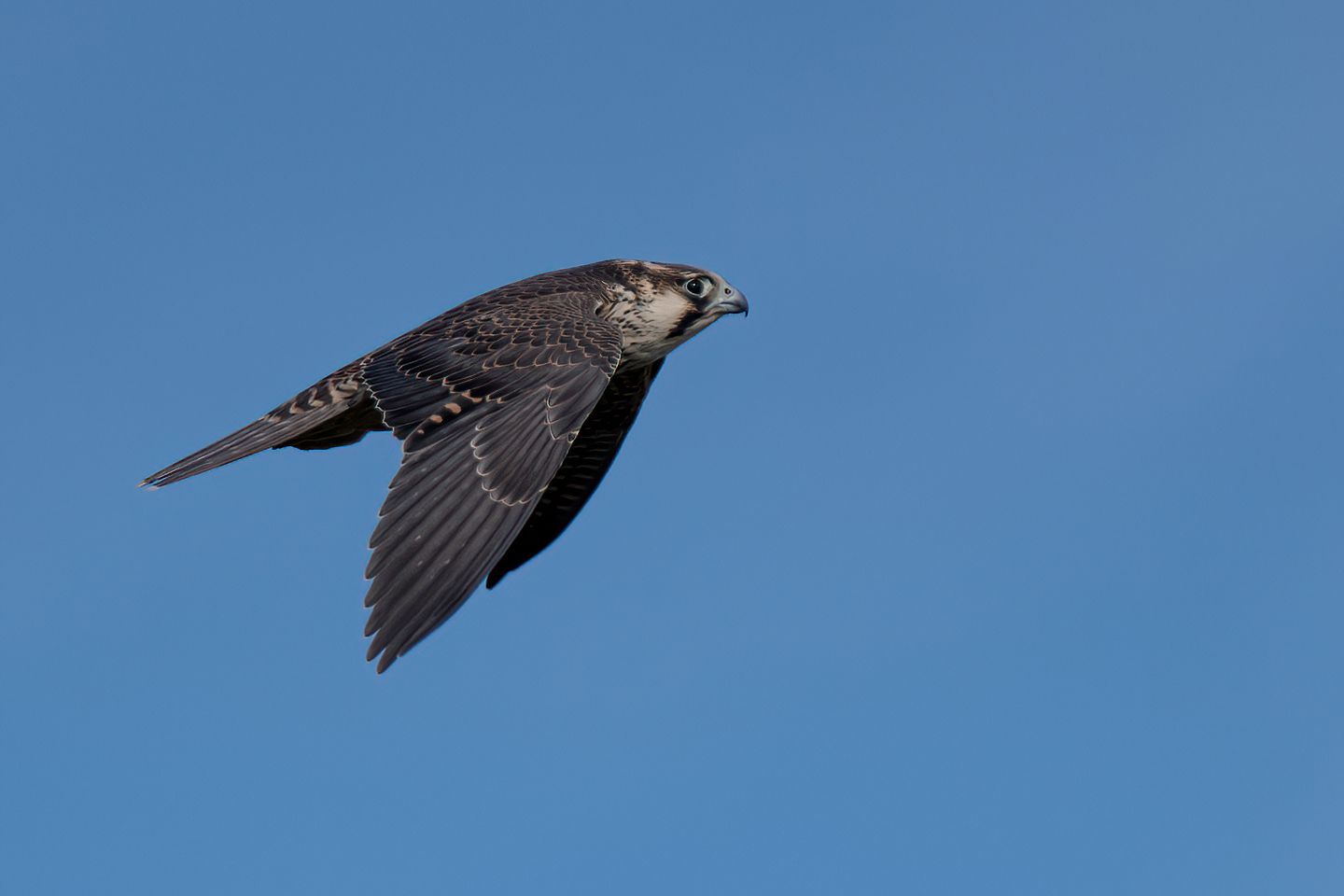
From the Madison conference came a commitment to do something to save the Peregrine. While success in political efforts to eventually ban DDT was years away, other steps were immediately possible. Increased research and monitoring focused on remaining populations. It was already too late to save birds of the eastern mountains, but reintroduction plans were rapidly underway. As a favored hunting hawk, there were already substantial numbers of Peregrines in captivity. Captive breeding and reintroduction to suitable sites in the wild became the chosen strategy to replace birds whose successful natural reproduction was no longer possible. Simple and straightforward right? Unfortunately not, and that’s the rub.
As this reintroduction strategy developed, most notably by Dr. Tom Cade and what eventually became the World Center for Birds of Prey in Boise, Idaho, a few problems occurred. Whenever we humans create messes in the natural world and then try to fix them, it’s guaranteed not to be easy. First, there were not enough breeding stock of f. p anatum available for captive breeding. Its North American cousin was unsuitable because it’s wanderlust lifestyle was incompatible with what was needed. There were other resident subspecies, such as the Spanish Peregrine, in captivity, whose ecology more closely matched our mountain birds.
Is this mixing of subspecies a problem? Depends on who you ask, but clearly the birds that now occupy former mountain sites have somewhat different genetics than their predecessors.
The captive breeding/ hacking techniques became, by the 1970s, the dominant manner to bring back resident Peregrines in the northeast. State and Federal governments poured money into these programs, since recovering a species after it’s lost is many times more expensive than saving it in the first place. Other problems developed in field work attempting to place birds at traditional sites. It seems Great Horned Owls are very fond of young Peregrines and without adults present to defend the young, the project was a very expensive owl feeding program.
Many ways were tried to solve the owl predation problem. One of the most controversial was placing hacked young on nest platforms in marshes of Atlantic coastal states including New Jersey. The justification at the time was that Peregrines nested there at one time in past centuries. The evidence for that claim was minimal at best, leading folks like Pete Dunne, then director of the Cape May Bird Observatory, to describe these introduced birds as “poultry.” Concerns about adverse interactions with native and endangered species like Northern Harrier were legitimate concerns.
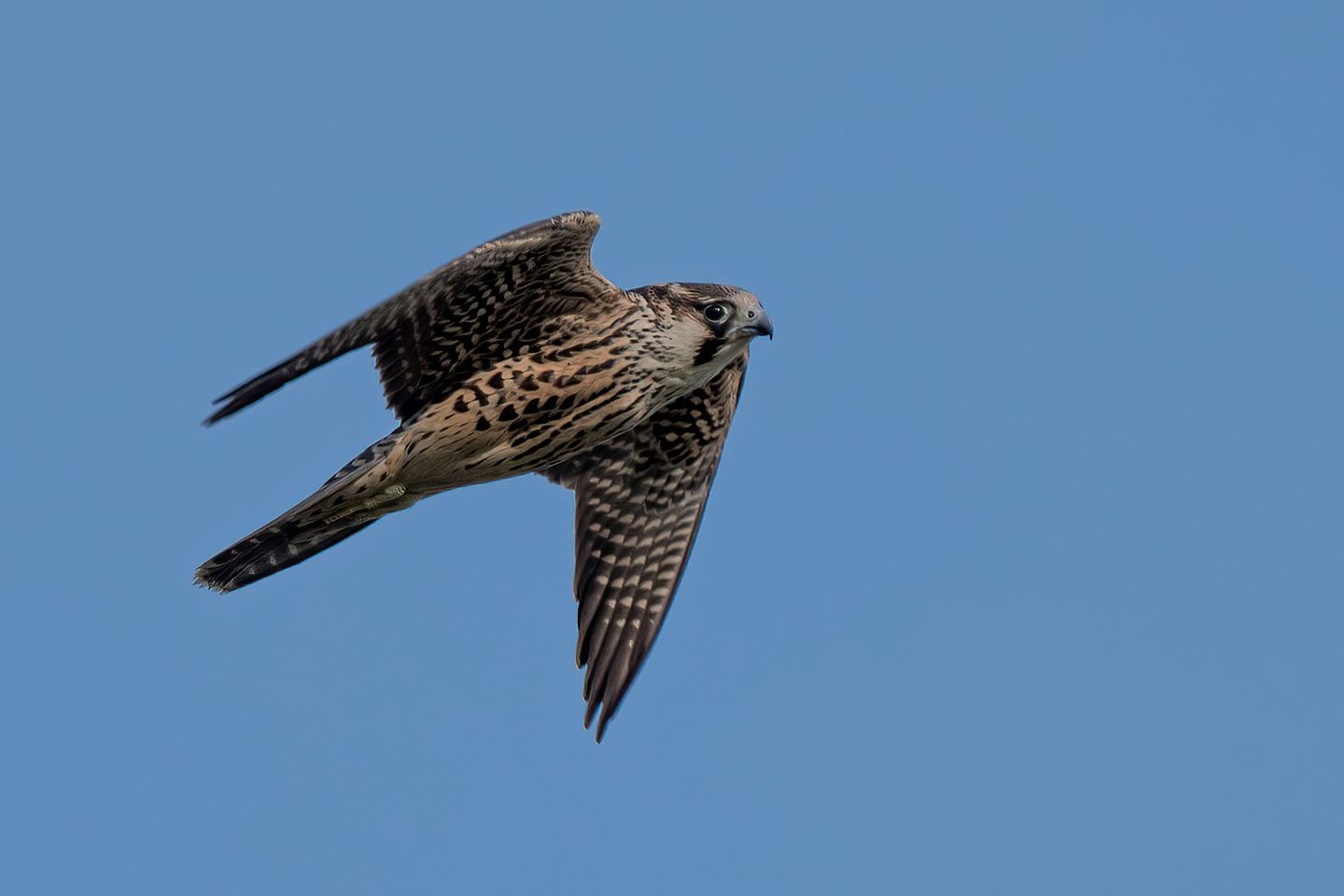
Since those pushing all aspects of the by now steamrolling reintroduction program had academic and agency credentials, who could successfully challenge such now conventional wisdom? Only a few like Dunne tried, and their voices were generally ignored. The restoration program that was developed succeeded beyond anyone’s wildest dreams. This magnificent predator has adapted well to the Northeast part of the continent. In addition to mountains, they now occupy the human created cliff faces of bridges, buildings, and other humankind dominated habitats. Peregrines are back with a healthy and growing population in our Eastern North American landscape. A conservation success story that we all should celebrate, right?
I am personally not so sure, as the way we got here bothers me. The genetic mixing and the expediency of some decisions in the past needs to be questioned. As always, hindsight is 20/20 and it’s easy to second guess the actions of those faced with a critical situation six decades ago. While the adaptation of this population to human structures provides a wildlife experience for urban humans, it comes with problems. Resident birds in New York City a few years ago were observed taking many migrant Yellow-billed Cuckoos passing through. This is a hazard that declining species would not have faced prior to the adaptation of these Peregrines to urban areas.
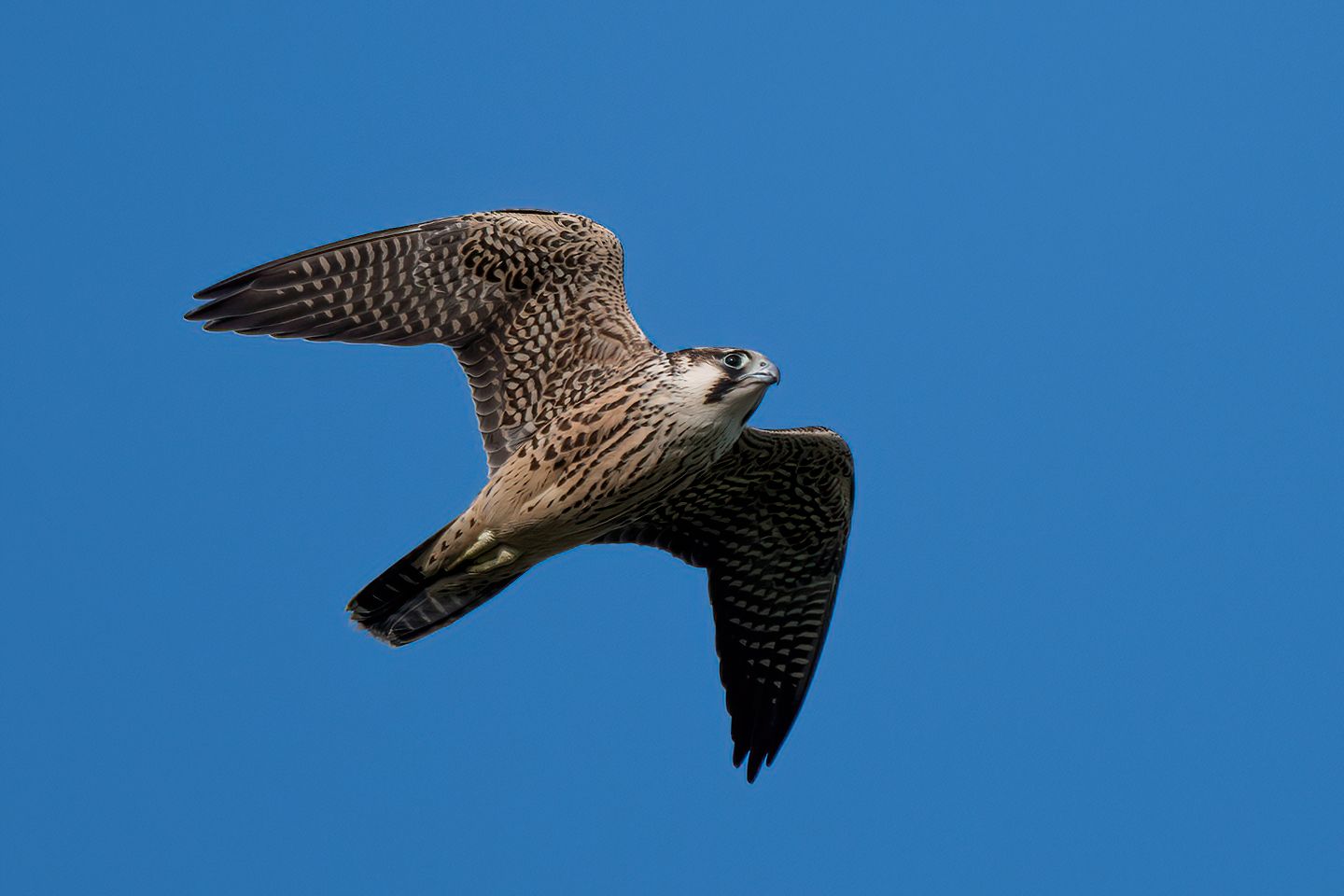
In our region, Peregrines nesting on bridges are adversely impacting the threatened Common Terns breeding on navigation buoy platforms. Because of loss of natural habitat to humans and other factors, these artificial colony sites have become increasingly important to regional populations of terns. The degree that these expanded Peregrine populations adversely impact other species of concern is unclear, but worthy of consideration. It is clear that whenever we seek to manipulate the natural world, even with the best of intentions, a healthy dose of skepticism and humility is required. I still thrill to the sight of a Peregrine inflight pursuing its prey. Since the Arctic birds are clearly recognizable from the reintroduced birds, I always enjoy the former. Sometimes, I have qualms about the latter but the birds and most birders could care less.
By Sherri Leigh Smith, goshawk@gisco.net
Photographs by Julie Covey, Nature in NY (https:www.facebook.com/NatureinNNY/)
Sherri Leigh Smith is the Senior Ornithologist in northern NY. He is passionate about birds and their conservation. Sherri Leigh has written numerous articles for TI Life, and you can see several of them here.
Editor’s Note: This editor is both pleased and appreciative of Sherri Leigh Smith for taking the time to help us understand more about birds and nature in the Thousand Islands region. Sherri Leigh and nature photographer Julie Covey, provided wonderful contributions for fall 2020, winter 2021 and spring and summer 2021.
Posted in: Volume 16, Issue 10, October 2021, Nature
Please click here if you are unable to post your comment.
